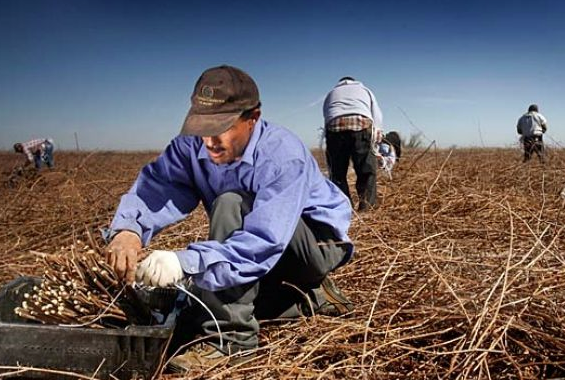Isn’t it nice when something you felt vaguely unsure about becomes clear? This week I learned some new things about grape vine propagation that seemed to dispel the mists that have surrounded this topic for me. I’ll use this week’s wine note to pass them along to you.
Let’s start with the very basics. When we speak of vitis vinifera we are describing the genus (vitis) and species (vinifera) that together name the vine that produces grapes from which wine is made. This is the vine that grew wild in the area between the Black and Caspian Seas (modern-day Georgia, Armenia), the mountains of northern Iran, and eastern Turkey and that we eventually domesticated. There are many other species of vitis (rupestris, labrusca, riparia, aestivalis are common) but it’s vinifera that’s responsible for all the world’s serious wine.
Below genus and species in the botanical taxonomy are vine varieties. Chardonnay, pinot noir, tempranillo, and so on, are all varieties of vitis vinifera. Here’s where it gets interesting.
Every time a grape seed is planted and results in a vine, that vine constitutes a new variety. It’s a completely new idea to me — and maybe to you too — but it makes sense when you think about it. Consider parents and children: each time parents produce a child by normal biological reproduction, that child is unique, notably different from his siblings. Same with vines. When ampelographers (grapevine classifiers) refer to a new variety, what they mean is a grape vine grown from seed.

Credit: Craig Lee / San Francisco Chronicle
At this point, you may be thinking that if this is the case, there must be be millions and millions of wine grape varieties out there instead of the few thousand we have catalogued – and you would be right except for one thing: unceasing human effort over hundreds of generations to select the best vinfera varieties for managed reproduction. Varieties that have been rationally selected and propagated this way are properly called cultivars.
This explains why grape vines aren’t normally propagated from seed. Like children, vines propagated by seed are an amalgam of DNA contributed by both parents, who in their turn have the DNA they received from their parents. In a new variety, as with a child, both agreeable and disagreeable characteristics can appear. It’s a matter of chance.
But when we find a shapely, sturdy, healthy, productive vine, we don’t want to risk introducing negative characteristics by propagating it by seed. Instead we make more like-featured vines by planting a snippet of bud-bearing cane or, alternatively, by pulling a long cane still attached to the vine down to the ground and burying its middle where we want the new vine to be rooted. This is called vegetative or asexual propagation. What results isn’t so much a new vine as a new instance of an old one. Have a look at this 2 minute video to see how this is typically done.
The winegrower in the video is demonstrating a technique called massale selection, by which means a number of outstanding vines from a given vineyard are identified and new vines are propagated from cuttings made of their budwood. Because many plants are involved which will by virtue of accumulated chance mutations not be absolutely identical, genetic diversity is maintained in the vineyard.
When, by contrast, propagation is done not from multiple vines but from a single vine, each new vine that results will be identical in DNA and in physical characteristics to the original. It will be a clone of the mother plant. The work of developing clones is typically accomplished in commercial nurseries, not on the farm.
During the last fifty years or so, it became routine to replant with clones. Today, many producers are seeing the advantage of massal selection and making a switch.
For me, the hardest part of all this to integrate is the new-to-me definition of varietal (a vine grown from seed) mainly because it has some strange implications. For example, a vine that results from the (normal, biological) sexual crossing of two cabernet sauvignon plants will not itself be cabernet sauvignon (I’m tempted to put an exclamation point here). Instead, the genetic mixing of the parents’ DNA that always results from sexual reproduction will produce something entirely new.
By the same token, a biological mating of the known parents of cabernet sauvignon (cabernet franc and sauvignon blanc) will not produce cabernet sauvignon – but something different, a new varietal altogether.
The cabernet sauvignon that we know is, therefore, a complete fluke; a one-and-done, never-to-be-repeated, unique event.
Not unlike you and me.
That’s it for now.
-Stephen
A reminder that all weekly wine notes are archived at tableintime.com/weekly